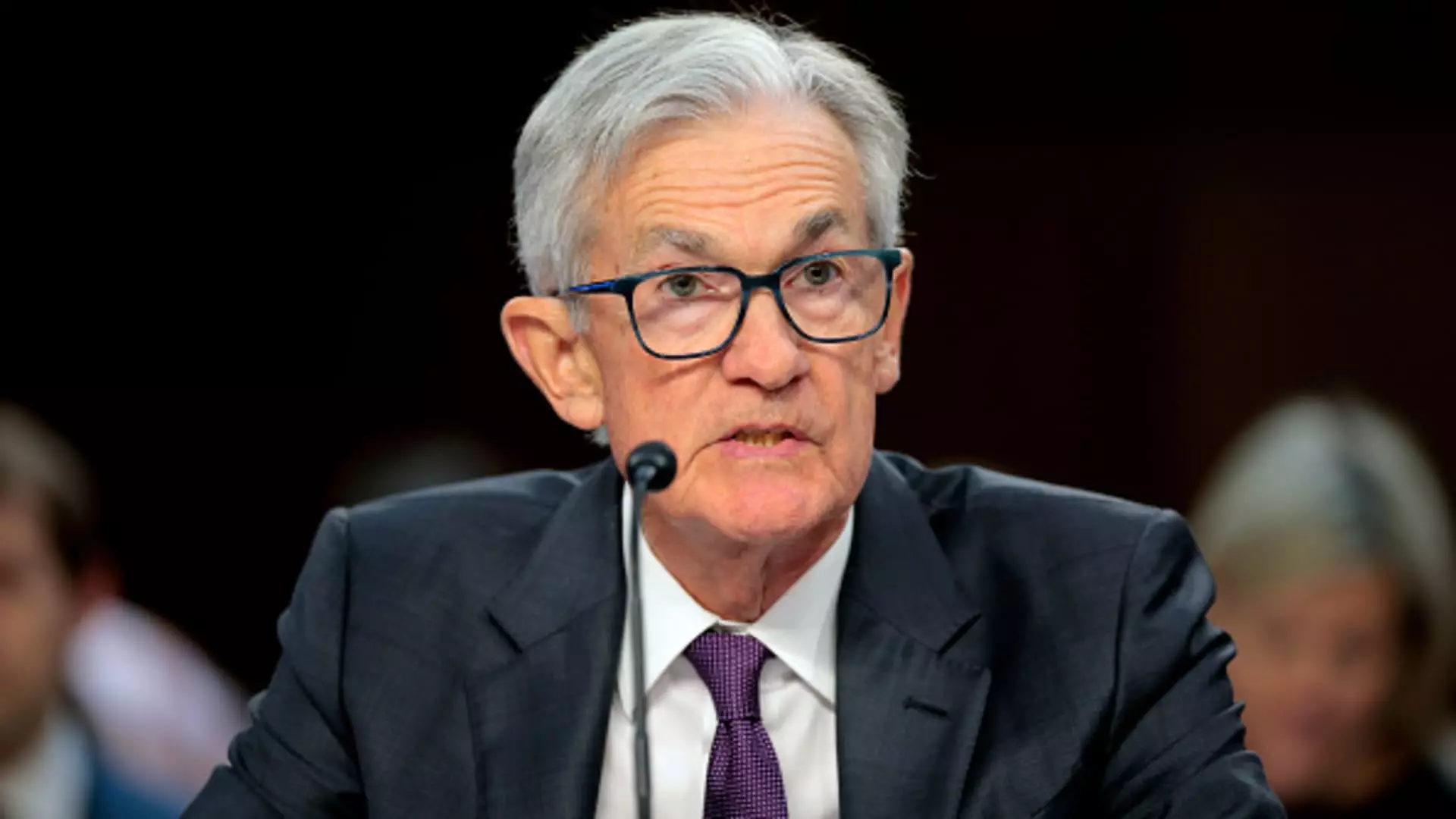In a startling revelation from the March CNBC Fed Survey, economic pessimism has reached new heights, indicating that the specter of recession looms larger than it has in the past six months. The probability of a recession surged dramatically from 23% to 36%, a substantial leap that signals serious unease among economic professionals, including fund managers and analysts. Their forecasts for 2025 have not only been downgraded but have taken a sharper downturn, reflecting mounting anxieties concerning fiscal policies purportedly stemming from the Trump administration. With tariffs now recognized as the predominant threat to economic stability, inflation fears have receded, illustrating just how the landscape of economic risk has shifted.
Tariffs: The Unwelcome Shadow Over Growth
The overwhelming consensus from the survey respondents identifies tariffs as the primary risk to the U.S. economy. This revelation speaks volumes about the psychological toll that uncertainty around trade policies inflicts on investor confidence. Barry Knapp of Ironsides Macroeconomics underlined the palpable angst among investors, suggesting that the Trump administration’s trade agenda may lead to unforeseen repercussions. As potential trade wars fracture stability, the resultant chaos is not merely a soft patch but signifies the advent of something far more severe. There’s a desperate need to realign our economic policies to foster growth rather than stifle it through protectionist measures that benefit a select few while punishing the broader economy.
Sharp Downgrades Reflect a Diminished Outlook
The GDP forecast for 2025, significantly reduced from 2.4% to a mere 1.7%, is shocking. Such a drastic recalibration calls into question the optimistic projections that many held following President Trump’s election. It reflects a fear that policies unraveling since then have led us off the path of steady growth. Surprisingly, the forecast does posit a rebound of sorts by 2026, with GDP expected to hit 2.1%. Yet, this “bounce back” feels more like a desperate hope than a well-founded certainty. The facts presented by economic research leaders underline the fragility of consumer spending, particularly when coupled with a stagnant housing market and dwindling governmental expenditures at state and local levels.
The Federal Reserve: Caught Between a Rock and a Hard Place
The researchers’ consensus indicates expectations that the Federal Reserve will embark on rate cuts this year, potentially twice or even more, as they attempt to navigate the choppy waters of higher tariffs and slower growth. Such a move represents a critical juncture for the Fed, which faces unprecedented challenges. If Fed chair Jerome Powell opts to cut rates amid rising unemployment, he runs the risk of overreacting to short-term economic fluctuations. Peter Boockvar, chief investment officer at Bleakley Financial Group, highlights this tension, suggesting that any premature rate cuts could leave the Fed vulnerable should tariff pressures dissipate unexpectedly.
Furthermore, over 70% of financial insiders regard tariffs as detrimental not just to inflation, but also to job growth and domestic productivity. Tariffs are seen as a blunt instrument that, instead of fortifying the economy, may inadvertently lead to a retreat in U.S. manufacturing capabilities. This trade policy certainly appears misguided, as it complicates an already fragile economic narrative.
Political Dysfunction: The Elephant in the Room
The broader implications of tariff-induced recession extend beyond mere numbers and charts; they speak to a political dysfunction that threatens to derail economic progress. As Mark Zandi of Moody’s Analytics aptly observes, a mixture of aggressive trade policies, erratic cuts to government positions, and internal bureaucratic inefficiencies creates a toxic brew that risks upset in a previously robust economy. The global trade landscape becomes riddled with obstacles that not only hinder job creation but also erode the potential for sustainable growth.
At a time when unity and smart policy-making are paramount, the U.S. is marked by divisive rhetoric and half-hearted solutions. It’s an alarming reality that, if neglected, could catalyze a recession we can hardly afford. In sum, the economic landscape appears to be teetering on the edge of instability, requiring urgent action, nuanced discussion, and a collaborative approach to reclaim a path towards resilient growth.

